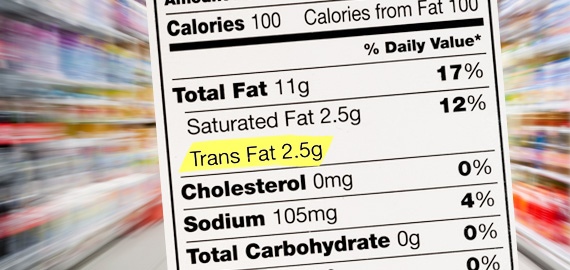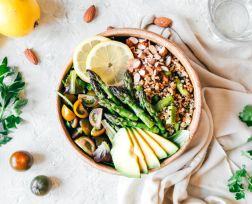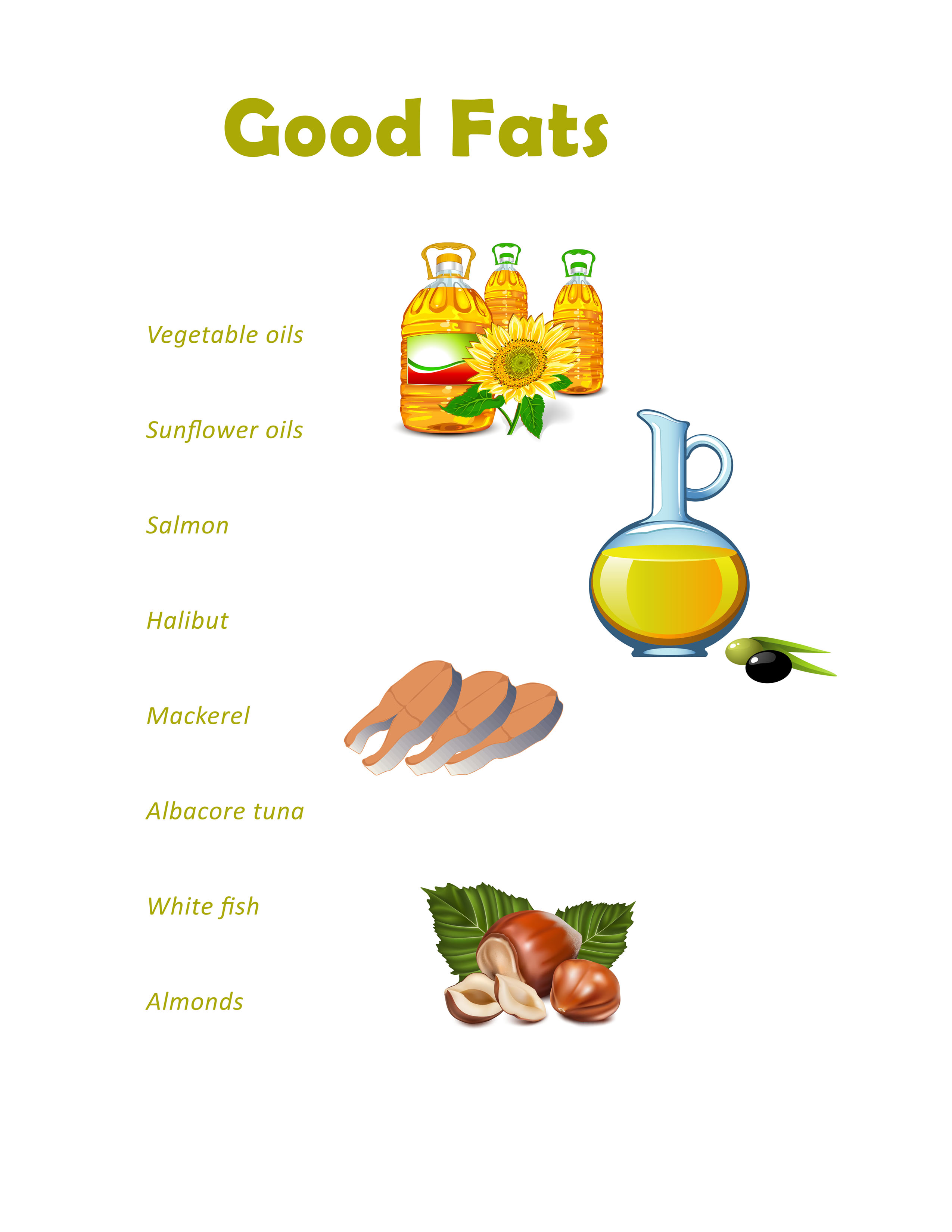42 bad fats on food labels
7 Hidden Messages In Packaged Food Labels - Eat This Not That While some think having foods with fat in it is bad, it's actually healthy to have a good amount of fat in your diet—fatty foods make you feel full! However, knowing the different types of fat will matter when reading a nutrition label. According to Mayo Clinic, limit your saturated fat count to less than 10 percent of calories a day. As for ... Understanding food labels 101 - Heart Foundation Bad fats ; Animal fat, beef fat, butter, chocolate, carob, coconut oil, cream, dripping, ghee, hydrogenated oils, lard, margarine, milk solids, monoglycerides, palm oil, seeds, nuts, coconut, tallow, shortening, trans fats, vegetable fat. Salt ; Baking soda, salt, MSG (monosodium glutamate), any word containing the term sodium, nitrates, nitrites. 3.
What Are the Fats Not Listed on Nutrition Labels? - SF Gate The nutrition facts label highlights the fats that you should limit in your daily diet. It lists the amount of total fat you'll get in one serving of that product, followed by the amount of...
Bad fats on food labels
Interpreting Total Fat and Types of Fat on Food Labels - Nina Cherie ... The Nutrition Facts label lays out the "total fat" in addition to the different types of fat contained in foods. Determining the type of fat can help you decide whether or not a food is rich in 'healthy' and/or 'unhealthy' fats. Trans fats and, in some cases saturated fats, are considered "unhealthy" or "bad" while monounsaturated and polyunsaturated (omega-3) fats are generally healthier alternatives or "good" fats. Food labels - Better Health Channel Reduced fat or salt - should be at least a 25% reduction from the original product. Low fat - must contain less than 3% fat for solid foods (1.5% for liquid foods). Fat free - must be less than 0.15% fat. Percentage of fat - remember 80% fat free is the same as 20% fat, which is a large amount. Top 10 High Fat Foods to Avoid - myfooddata Read ingredient labels and avoid any trans or partially hydrogenated fats or oils. High-fat foods to avoid include fast foods, whipped cream, fatty meats, fried foods, fatty snacks, processed meats, desserts, fatty salad dressings, animal fats, and trans-fats. ( 1) The daily value (DV) for fat is 78 grams per day. ( 2)
Bad fats on food labels. Bad Fats Can be Hidden on Nutrition Labels | Broken Secrets This label is from Fiber One cereal. The total fat is 1.5 grams per serving, but if you add all of the itemized items you only get 0.5 grams. That means, 1 gram of fat is hidden. If it was all monounsaturated it wouldn't be so bad, but it can't be more than .49 grams of good fat or it would have to be listed. Therefore, we know there must ... Food Marketing and Labeling - Obesity Prevention Source In the U.S., for example, after the Food and Drug Administration required manufacturers to start listing heart-harmful trans fats on the Nutrition Facts label in 2006, food makers and restaurants switched to using more healthful sources of fat. Since then, trans fat levels in the U.S. food supply have dropped, as have blood levels of trans fat. Should unhealthy food have warning labels? Score: 5/5 (26 votes) . Food products sold in the U.S. that contain high levels of unhealthy nutrients should be marked with prominent warning labels on the front of the product packaging, according to an October 1, 2020 JAMA Viewpoint article. ...Nutrient warnings are an important strategy that should be leveraged as soon as possible." 13 Misleading Food Label Claims and How Not to Be Tricked Products labeled sugar-free may also have higher levels of fat in order to make up for the taste and texture that is lost when sugar is removed. 2. Label Says "Fruit-Flavored" Reading on a label that a product is fruit-flavored suggests that the product is flavored with real fruit. This, however, is not necessarily the case.
Fat Content on Food Labels - Reading Between the Lines When it comes to listing fat on food labels, manufacturers are required to only list total fat and saturated fat. Some also voluntarily list monounsaturated and polyunsaturated fat, but it's unlikely you'll see trans fat listed." The Mayo Foundation continued, "Still, you may be able to tell if a product contains trans fat, even if it's not directly listed on the food label. Look for the words 'hydrogenated' or 'partially hydrogenated' in the list of ingredients. These ... Easy Guide to Understanding Food Labels When You Have High ... - MyDoc 1. Choose products low in saturated fat, trans fat and cholesterol. When shopping for food, use the nutrition information panel to compare and choose products with lower fat, saturated fat and cholesterol content. Saturated fat is a type of fat that raises your total and LDL cholesterol and risk of heart disease, so intake should be limited. Food Labels: Fat & Cholesterol | Home & Garden Information Center Limit these sources of unhealthy fat and cholesterol in the list of ingredients: animal fat (beef, ham, pork, bacon, lamb, chicken, turkey), lard, hardened fat or oil, egg and egg-yolk solids, cream, butter, whole-milk solids, palm oil, palm kernel oil, hydrogenated vegetable oil, vegetable shortening, coconut, coconut oil, and cocoa butter. How to Read Food Labels Without Being Tricked - Healthline This phrase means "less than 0.5 grams of trans fat per serving." Thus, if serving sizes are misleadingly small, the product may still contain trans fat ( 5 ). Despite these cautionary words, many...
How to Read a Food Label & How to Find Unhealthy Hidden Ingredients These types of fats help children absorb vitamins and compliment cognitive skills. However, too much of any fat can be burdensome and lead to weight gain. Now when reading a food label, you need to make sure that the product does not have too much saturated fat; and that it does not have any trans fats. Trans fats should be avoided. Trans Fat How food labels can mislead shoppers about fat content Kraft Light Singles were 11 per cent fat. Walkers Lites crisps were advertised as 33 per cent less fat, but still contained 22 per cent. Laughing Cow Light had 7 per cent fat, while Marks and... safefood | How to read food labels How do I know if a food is low, medium or high in fat, saturated fat, sugar and salt? Some labels use colour coding to show at a glance if a food is high, medium or low in fat, saturated fat, sugar and salt. Low (green) - the best choice Medium (amber) - okay most of the time High (red) - only choose occasionally. If the label isn't colour coded, use our label decoder as a guide. Understanding Food Nutrition Labels | American Heart Association When the Nutrition Facts label says a food contains "0 g" of trans fat, but includes "partially hydrogenated oil" in the ingredient list, it means the food contains some trans fat, but less than 0.5 grams per serving. So, if you eat more than one serving, you could end up eating too much trans fat.
Fats, sugar, carbs: How to read a food label (and seven words to watch ... For processed foods such as biscuits, cakes, pastry, frozen goods and snacks, aiming for foods with less than 10 per cent fat is a good reference point, or less than 3 per cent saturated fat, which will help to ensure you do not eliminate the good fats with the bad. What about sugar?
On some food labels, there is also just an indication of how much fat is contained in a product but there is no differentiation between good and bad fats. Even though all kinds of fats contain a similar amount of calories, there are still huge differences regarding their health effects.
Food Labels | CDC All the numbers on this label are for a 2/3-cup serving. This package has 8 servings. If you eat the whole thing, you are eating 8 times the amount of calories, carbs, fat, etc., shown on the label. Total Carbohydrate shows you types of carbs in the food, including sugar and fiber. Choose foods with more fiber, vitamins, and minerals.
How to Understand and Use the Nutrition Facts Label | FDA Saturated fat, sodium, and added sugars are nutrients listed on the label that may be associated with adverse health effects - and Americans generally consume too much of them, according to the...
Fat free and 100% natural: seven food labelling tricks exposed In food labelling, we really have to hunt for the "what". Fountain's Smart Tomato Sauce still contains 114mg of salt per serving, while the brand's regular tomato sauce contains 186mg ...
7 Nutrition Label Ingredients to Avoid - Walker Methodist Simply replacing trans-fats with healthy fats could decrease your risk of heart disease by 53 percent. Partially Hydrogenated Oils Partially Hydrogenated Oil is another form of trans-fat to watch out for on nutrition labels. This type of trans-fat is known to clog arteries and contribute to obesity and heart disease. High Fructose Corn Syrup (HFCS)
Are you being fooled by food labels? - BBC Food Superfood: the term 'superfood' has no regulatory approval and no accepted definition - it is more a marketing word than a health one. Regardless, it's been shown to have a strong effect on ...
Food Labels: 5 Harmful Ingredients To Avoid - ThePostGame.com Here are some of the worst ingredients that are added to many foods that you should look out for and avoid: Partially Hydrogenated Oil Partially hydrogenated oil is another name for a trans fat....
How to read nutrition labels | safefood Some labels use colour coding to show at a glance if a food is high, medium or low in fat, saturated fat, sugar and salt. Low (green) - the best choice Medium (amber) - okay most of the time High (red) - only choose occasionally. If the label isn't colour coded, use our label decoder as a guide.
Food labels - NHS Some front-of-pack nutrition labels use red, amber and green colour coding. Colour-coded nutritional information tells you at a glance if the food has high, medium or low amounts of fat, saturated fat, sugars and salt: red means high amber means medium green means low In short, the more green on the label, the healthier the choice.
Food Label Detective: How to Spot the Good Fats - The Dr. Oz Show Both saturated fat and trans fat amounts are clearly listed underneath "Total Fat," although some foods labeled trans fat-free may still contain small amounts (up to 0.5 grams) of trans fat. That's why it's important to also check a food's ingredient list. Avoid foods that contain "partially hydrogenated oil," which means trans fat is present.
Top 10 High Fat Foods to Avoid - myfooddata Read ingredient labels and avoid any trans or partially hydrogenated fats or oils. High-fat foods to avoid include fast foods, whipped cream, fatty meats, fried foods, fatty snacks, processed meats, desserts, fatty salad dressings, animal fats, and trans-fats. ( 1) The daily value (DV) for fat is 78 grams per day. ( 2)
Food labels - Better Health Channel Reduced fat or salt - should be at least a 25% reduction from the original product. Low fat - must contain less than 3% fat for solid foods (1.5% for liquid foods). Fat free - must be less than 0.15% fat. Percentage of fat - remember 80% fat free is the same as 20% fat, which is a large amount.
Interpreting Total Fat and Types of Fat on Food Labels - Nina Cherie ... The Nutrition Facts label lays out the "total fat" in addition to the different types of fat contained in foods. Determining the type of fat can help you decide whether or not a food is rich in 'healthy' and/or 'unhealthy' fats. Trans fats and, in some cases saturated fats, are considered "unhealthy" or "bad" while monounsaturated and polyunsaturated (omega-3) fats are generally healthier alternatives or "good" fats.










Post a Comment for "42 bad fats on food labels"